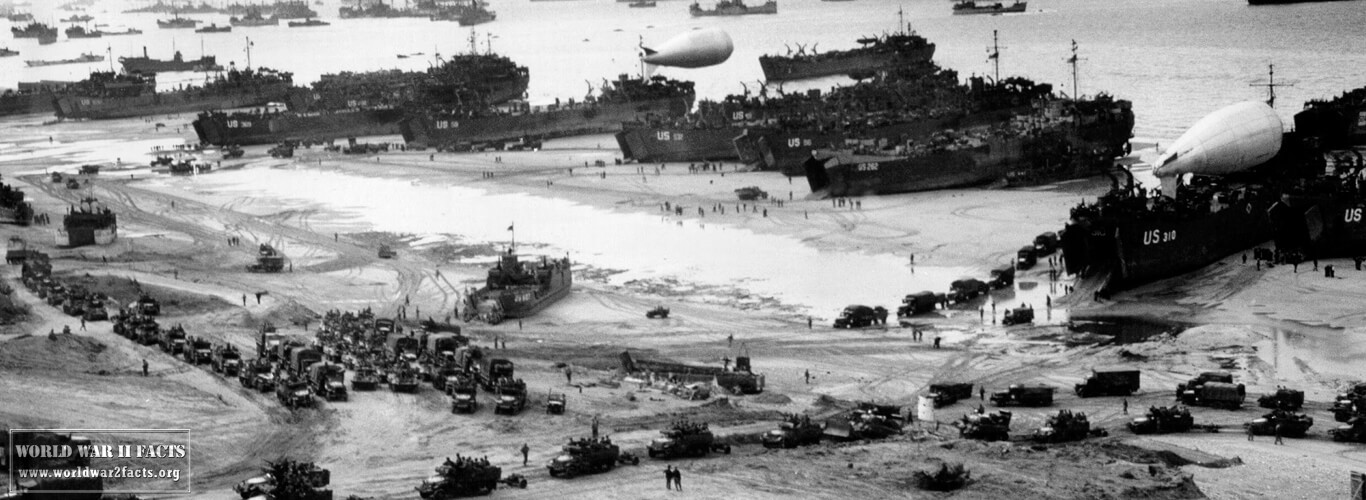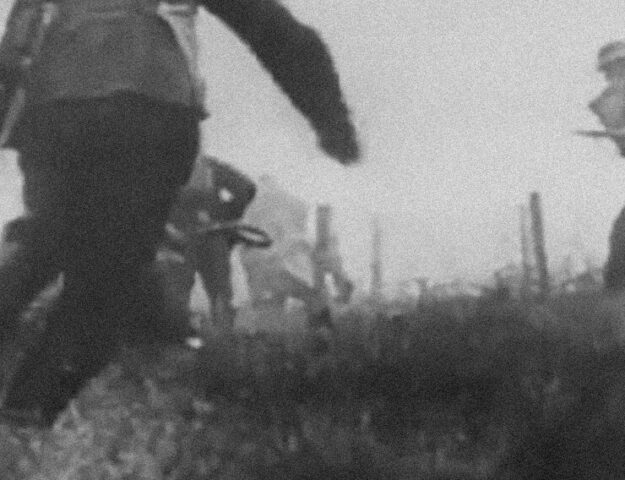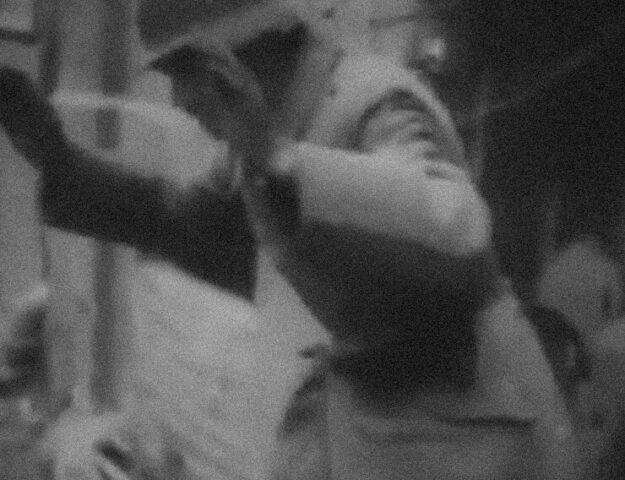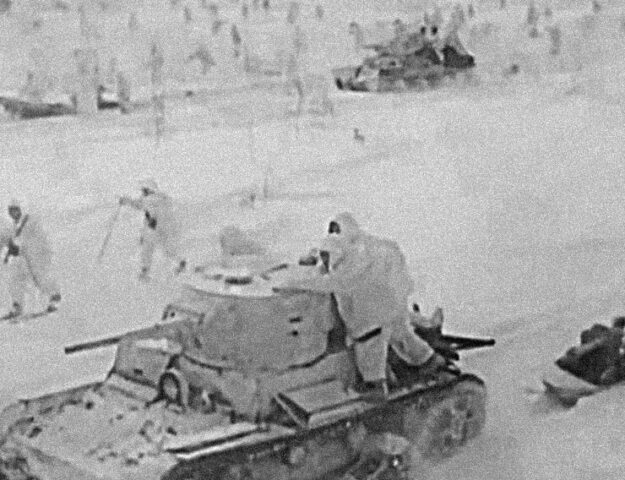Battle of Okinawa Facts

During World War II, there were two main battlefields; the first was in Europe against Italy, Nazi Germany, and its allies; the other was mainly between the U.S. and Japan. One of the more critical battles between Japan and the U.S. was the Battle of Okinawa. The battle started on April 1, 1945, and was necessary for the U.S. plan to end the war in the Far East. The battle would go down in history as one of the bloodiest, most brutal, but also important battles in the Second World War and lasted effectively through June 22nd, 1945. This would be the last major battle of World War 2.
United States Objectives in the Pacific Theater
Contents
- United States Objectives in the Pacific Theater
- Battle of Okinawa Commanders
- Battle of Okinawa Force Levels
- Battle of Okinawa Casualties and Losses
- Military Estimates of Japanese Forces on Okinawa
- Japanese Defensive Strategy on Okinawa
- American Forces Available for the Okinawa Landings
- Battle of Okinawa Video
- Battle of Okinawa Summary
- Battle of Okinawa Conclusions
- Battle of Okinawa References
At that point, the U.S. had two main objectives regarding the Far East: eliminate the rest of Japan’s merchant fleet and a direct attack on the Japanese industrial complex. Okinawa is an island on the southern end of Japan; it is around 60 miles (96 kilometers) long and 2 (3 kilometers) to 18 miles (29 kilometers) wide. Its strategic importance for both sides was paramount. The island had four airfields that the U.S. desperately wanted to control. However, a problem for the U.S. forces was that they couldn’t get a lot of intelligence about Okinawa.
Battle of Okinawa Commanders
The Battle of Okinawa, which took place from April to June 1945, had several Allied and Japanese commanders. Here are some of the key commanders involved in the battle:
Allied Commanders
The Battle of Okinawa saw some of the most influential military figures of World War II come together in one of the greatest clashes of the war. Commanders such as Simon B. Buckner, Roy Geiger, Joseph Stilwell, Chester W. Nimitz, Raymond A. Spruance, Sir Bernard Rawlings, Philip Vian and Bruce Fraser played significant roles in this battle in the Pacific Theater. Let’s take a look at these commanders and their contributions to the Battle of Okinawa.
General Simon Bolivar Buckner Jr.
General Buckner commanded the Tenth Army, an Allied force consisting primarily of U.S. Marines and Army soldiers fighting against the Japanese on Okinawa. He planned and executed the campaign for the island’s Northern part, overseeing naval bombardment and amphibious landings on the beaches. His strategies and tactics helped secure the island relatively quickly and with minimal losses.
Admiral Raymond A. Spruance
Admiral Spruance served alongside Admiral Nimitz in the Central Pacific campaign and was responsible for numerous naval victories throughout WWII. During the Battle of Okinawa, he commanded Task Force 58 whose mission was to overwhelm Japanese forces with superior numbers. With his experience, steadfastness and skillful guidance, he managed to turn the tide in America’s favor through devastating naval bombardments and blockades.
Sir Bernard Rawlings
British Admiral Sir Bernard Rawlings joined forces with Admiral Nimitz. He took command over British ships assigned to his fleet to contribute towards the success of Operation Iceberg, the main Allied effort against Japan’s stronghold in Okinawa. By conducting constant attacks on Japanese vessels and providing much-needed supplies and support, he significantly aided in liberating the island from its oppressive rule.
Roy Geiger
Geiger held the role of Vice Admiral and Commander of Expeditionary Forces during the Battle of Okinawa, leading the Navy and Marine Corps forces from his flagship USS Eldorado. He oversaw air bombardment of Japanese positions and directed massive spearhead invasions, which led to rapid territory gains for the Allies in the Southern areas of the island.
Joseph Stilwell
Major General Joseph Stilwell assumed command of all aerial operations during the Battle of Okinawa. He was also responsible for providing crucial support to ground troops through effective reconnaissance, bombing campaigns and close air support. His courageous leadership enabled him to hold back the waves of Japanese forces long enough for reinforcements to arrive and secure the victory.
Chester W. Nimitz
Admiral Chester W. Nimitz was the highest-ranking U.S. Navy officer in charge of the Central Pacific campaign during WWII, serving as the commander-in-chief of the United States Pacific Fleet and Pacific Ocean Areas. He was instrumental in coordinating Allied naval resources to successfully carry out operations on Okinawa by providing supplies and strategic direction from Pearl Harbor.
Philip Vian
Rear-Admiral Philip Vian commanded an important tactical unit known as Task Force 57 during WW2’s Pacific campaign which included a variety of carriers, battleships, cruisers and destroyers under his command as they provided cover for Allied air operations on Okinawa Island. Under his capable leadership, this fleet achieved several decisive successes against Japanese forces in defense of the Allied landings.
Bruce Fraser
Admiral Bruce Fraser served as Commander-in-Chief of The British Pacific Fleet during the Battle of Okinawa where he reportedly stated “This is not just a battle or campaign… this is the climax of our whole struggle!” With his determination and incredible skills, he directed huge fleets including carriers, battleships and minesweepers towards Japan’s Home Islands in order to bring an end to their reign over Asia.
These eight commanders were instrumental in organizing, planning and executing a successful Battle of Okinawa, culminating in a significant victory for the Allies that eventually turned into a total defeat for Japan. They are celebrated today for their courage and skillful leadership that bravely faced down a powerful Japanese enemy and emerged victorious for their nations and people.
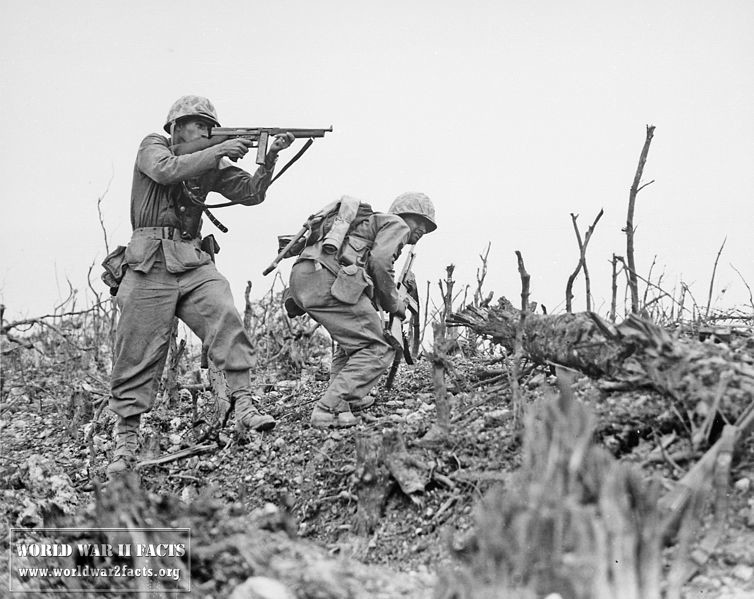
Japanese Commanders
The Battle of Okinawa was one of the most pivotal battles of World War II, and a diverse cast of commanders led it. Let’s take a look at four of these individuals and their contributions to this momentous conflict.
Mitsuru Ushijima
Mitsuru Ushijima was the commanding general of the Japanese forces in the Battle of Okinawa. He was an experienced military leader who had previously served in China and the Philippines. He was determined to hold off the American invasion at all costs and implemented a strategy of using defensive fortifications and suicide attacks. In the end, however, he could not prevent his forces from being overwhelmed by the sheer numbers of American troops.
Isamu Chō
Isamu Chō served as Ushijima’s chief of staff during the Battle of Okinawa. He was a loyal and experienced soldier who convinced Ushijima to launch a desperate counterattack against the larger American forces. Although the attack was ultimately unsuccessful, Chō’s courage and dedication in the face of adversity earned him widespread respect among his peers.
Minoru Ota
Minoru Ota was an infantry commander who fought fearlessly against the Americans during the Battle of Okinawa. He was renowned for leading a daring charge against entrenched American forces that allowed the defending Japanese soldiers to retake some of the lost ground briefly. His skillful leadership and bravery on the battlefield earned him both admiration and promotion within the ranks of the Japanese Army.
Keizō Komura
Keizō Komura was a naval commander who played a key role in assisting the land forces during the battle. Using his experience as a submarine captain, he commanded a fleet of small vessels that helped resupply and evacuate troops. He also provided valuable intelligence information to Ushijima’s headquarters, allowing them to strategize more effectively against the advancing American forces.
Ultimately, each of these commanders made an invaluable contribution to the Battle of Okinawa. Without their courage and dedication, it is unlikely that Japan could have held out for as long as it did against the overwhelming might of the United States Navy.
Battle of Okinawa Force Levels
| Category | Allied Forces | Japanese Forces |
|---|---|---|
| Troop Strength | 183,000 (initial assault force only) | 120,000, including 40,000 impressed Okinawan locals |
| Naval Strength | 1,300 ships, including 40 aircraft carriers, battleships, cruisers, destroyers, and submarines. | Approx. 1,500 ships, including battleships, cruisers, destroyers, and submarines. |
| Aircraft Strength | Over 12,000 | Over 2,000 |
Battle of Okinawa Casualties and Losses
Allies
- More than 12,000 killed
- More than 38,000 wounded
- 36 ships sunk, 368 damaged
- 763 airplanes lost from April 1st to July 1st, 1945
Axis
- More than 110,000 killed
- More than 7,000 captured
- 16 ships sunk, four damaged
- 7,800 airplanes lost/destroyed.
Civilians
40,000–150,000 civilians killed (*Note: Difficulty in finding sourcing documents with a more exact casualty figure for civilians results in the possible range of civilian deaths).
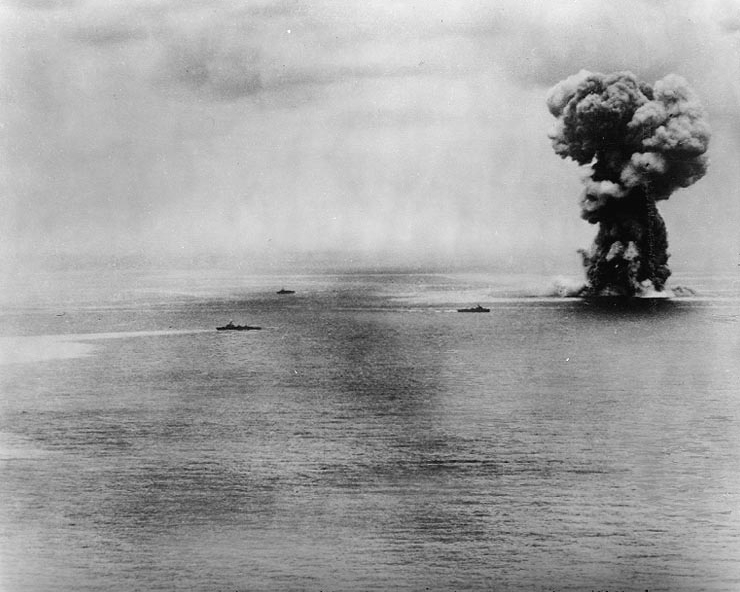
Military Estimates of Japanese Forces on Okinawa
United States military intelligence estimated that there were some 65,000 Japanese on Okinawa. They also estimated that most of them would be on the southern part of the island. In reality, there were 130,000 Japanese on Okinawa and some 450,000 civilians. The forces on the island were under the command of Lieutenant-General Mitsuru Ushijima; he had orders to hold the island at any cost.
Japanese Defensive Strategy on Okinawa
General Ushijima’s strategy was to keep his forces in secure fortifications south of the island. If the U.S. forces wanted to take Okinawa, they would have to engage in frontal assaults. On top of that, the Japanese also wanted to use kamikazes against the U.S. forces; they believed that the kamikaze attacks would deal so much damage to the U.S. forces that they would give up Okinawa and retreat.
American Forces Available for the Okinawa Landings
Lieutenant-General Simon Bolivar Buckner was the commander of the American land forces. He had some 180,000 men for the Battle of Okinawa. The U.S. forces selected Hagushi Bay to land on Okinawa, as they had done in Iwo Jima; before the landings, a series of intense bombings were performed. Another problem for the U.S. forces was that they were vulnerable to attacks from Taiwan and mainland Japan.
Battle of Okinawa Video
Battle of Okinawa Summary
The U.S. command selected 1 April 1945 as the date of the attack. In the days before the attack, the U.S. forces had already landed some units on Okinawa, but it wasn’t in Hagushi Bay; it was some 20 miles (32 kilometers) to the southwest of Hagushi Bay.
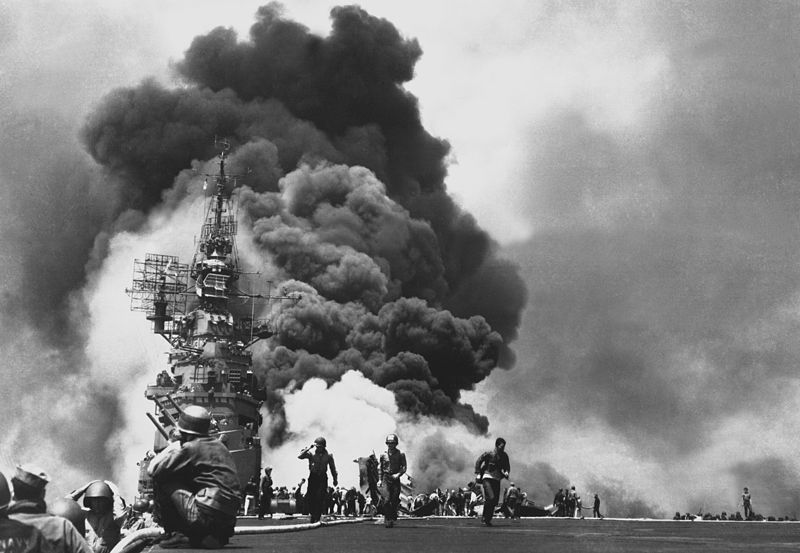
As the Japanese planned, they used Kamikaze attacks against the U.S. Navy anchored near Okinawa. The results, however, weren’t as great as the Japanese high command expected. A total of 193 kamikaze planes were launched, and out of those, 169 were destroyed. The remaining planes that did get through caused much damage, though. Despite that, the problem for the Japanese was that they lost a lot of planes in the process, so even though the aircraft that got through caused a great deal of damage, the Japanese lost a lot of airplanes as well.
As for the invasion, the U.S. sent 300 warships and over 1,000 other ships to the Battle of Okinawa. The Marines landed on the island on 1 April. They didn’t encounter much resistance, and by the end of the day, 60,000 troops had anchored in Hagushi Bay. In 20 days, almost all Japanese resistance in the north was eliminated.
The actual Battle of Okinawa was the battle that happened in the south. On 4 April, the U.S. XIV Crops got to the Machinato line. There the U.S. advance came to a halt. They breached the Machinato line on 24 April; once they branched Machinato, they were again halted at the Shuri Line. The offensives at Shuri and Machinato, combined with the efforts of the kamikaze attacks, which sunk 21 U.S. warships and damaged another 66, led to heavy U.S. losses.
On 3 May, Ushijima ordered a counter-attack but with no success. By 21 May, he had to retreat from the Shuri Line, but that didn’t mean that the Japanese defense weakened. By June, it became clear that the Japanese had already lost Okinawa. On 2 July, the Americans declared Okinawa as secure. A post-battle examination of many Japanese dead found that many soldiers had held grenades against their stomachs and died rather than face the humiliation of being taken prisoner by the United States forces. General Ushijima was found to have committed hara-kiri (ritual suicide) on June 16th after being convinced that he had fulfilled his duty to the Emperor.
Battle of Okinawa Conclusions
The Battle of Okinawa saw heavy casualties on both sides and was a victory for the U.S. forces. Of the U.S. land forces, over 7,000 were killed, and over 32,000 were wounded. The U.S. had over 5,000 dead and over 4,500 wounded on the sea. The Japanese death toll was over 100,000, and over 7,000 were taken as prisoners. The U.S. Navy lost 36 ships with over 360 damaged. The Air Force lost 763 planes. The Japanese lost 16 ships and over 4,000 aircraft. The formal document that signified the battle’s ending was signed on September 7th, 1945, at present-day Kadena Air Force Base. Well before this point, however, Allied engineers were hard at work making improvements to the island to support a future invasion of the Japanese home islands.
Battle of Okinawa References
- Appleman, Roy E.; James M. Burns; Russell A. Gugeler; John Stevens (2000). Okinawa: the last battle. Washington, D.C.: United States Army Center of Military History. p. 36.
- The Fall of Shuri, History.Army.mil, last viewed: 14 January 2014.
- Oral history interview with Mike Busha, a member of the 6th Marine Division during the Battle of Okinawa, from the Veterans History Project at Central Connecticut State University, Last Viewed: 14 January 2014.
